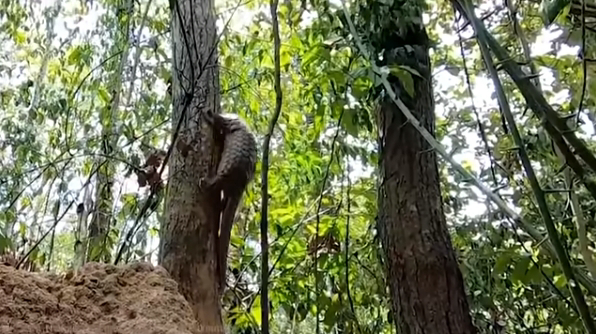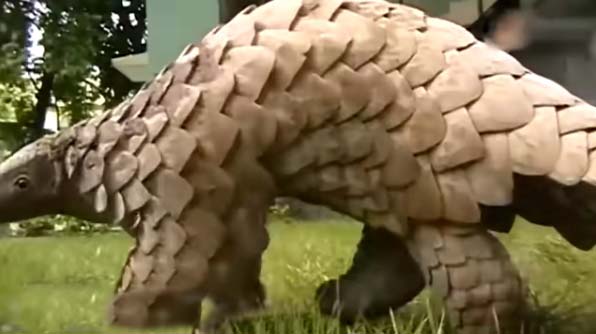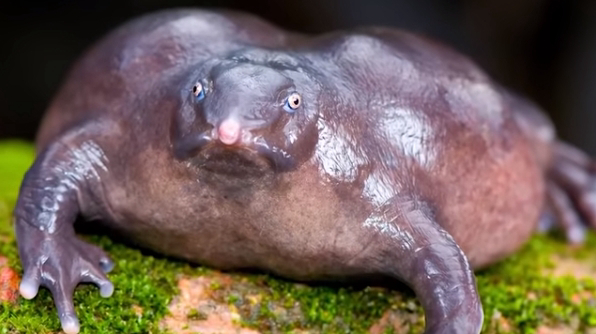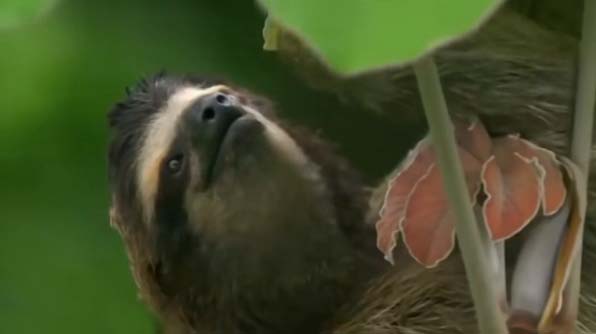Rarely seen wild animals are a mystery to us humans, as we know very little about the complexities of the animal kingdom. New species continue to be discovered regularly, with 270 new ones found in 2018 alone. This means there are animals out there that have rarely been observed by human eyes.
One of my favorite animals is the Number 15 shoe bill stork. Not many people have heard of this creature, and it’s like nature’s tribute to the Muppets. Even just seeing photos of it can be quite frightening to some, but I find it cute in a unique way (though I’m biased because I love the Muppets). Shoe bills mainly live in Eastern Africa, making their home in wetlands near the Nile. Not many people have seen them in person, but they are unmistakable, as they can grow up to five feet tall.

Their wings are more than eight feet wide, and that bill, oh boy, that bill, anyone who encounters one of these animals in the wild would remember it for sure. But perhaps one of the most notable things about the shoe bill is the way that it moves. Get ready for some nightmare fuel – shoe bills have the frightening ability to stand perfectly still for hours on end while holding their bills against their necks, exposing their golden eyes, and making any rational humans soil their pants. Very few people have seen a shoe bill in the wild, but those who have will tell you it’s definitely something memorable.
Now, moving on to a video you’d want to show your kids: smash that subscribe button and click the notification bell right now, or Slenderman will come from under your bed when you’re sleeping! It’s time for the juiciest topic of all – the rare animals we’re showing you today. This creature has to be the rarest of them all because this photo is literally the only piece of evidence that such a creature exists. Louise Jenkins was taking an early morning stroll in an Irish forest when she spotted this majestic creature and was truly mind-blown. What is it, and where did it come from?

Miss Jenkins had many questions running through her mind faster than Barry Allen. She encountered a confident creature that allowed her to pet its fur without running away in fear. Louise posted a picture of the creature on Facebook to ask for identification, but people accused her of faking it. She insisted it was real but didn’t think to film it at the time due to being overwhelmed and frustrated by the mocking.
Louise has been persistently trying to spot the creature again at the same spot and time every day for five years, but she hasn’t succeeded. So, the question is whether Louise is just imagining things, or if the magical creature truly exists. Let us know your opinion by commenting below with the hashtag #juicytopic.
Moving on to the next topic, number 14 is about the pangolin, like many humans, some animals are naturally shy and prefer not to encounter humans in the wild, especially if the humans are trying to harm them, as is the case with harmless pangolins.
These poor animals, known as pangolins, face a tragic fate every day, and that’s probably why very few people have seen them in the wild. Pangolins are the world’s most trafficked mammals, even more than humans. Poachers kill tens of thousands of them each year. Their meat is considered a delicacy for extremely wealthy citizens in China and Vietnam, while their scales are commonly used in traditional Chinese medicine. Because of this, all species of pangolins are either critically endangered or vulnerable.
This explains why it’s challenging to spot them in their natural habitat. Several animal rights organizations have tried to stop pangolin poaching, but it might be too late to save their declining population. Many people continue to search for pangolins in the wild, but it’s becoming increasingly difficult to find them. These peaceful and shy creatures are decreasing in numbers each year, so many of us may have to be satisfied with admiring photos of them.
There aren’t many animals that have sparked as many conspiracy theories as the Seneca white deer. It’s a mysterious and beautiful animal, and people can’t seem to agree on its origin, which adds to its magical aura. Some theories suggest it could be a result of a failed army experiment, radioactive genetic mutation, or even ghosts. But if those ideas sound too ridiculous, you can trust the scientists who claim it has slightly different genes compared to regular deer, though that might be less exciting.
These white deer have been around since at least 1941 when they started thriving in a fenced-off area of land designated for the US army. While most deer were your typical brown color, some stood out with their unusual and highly noticeable white coat, sparking the conspiracy theories we know today. Spotting a Seneca white deer in the wild is rare, but their naturally bright coat makes them hard to miss.

The history of these deer remains a mystery, and they continue to intrigue people to this day. Now, let’s move on to Number 12: The Elephant Shrew.
The elephant shrew is a fascinating creature that might seem confusing due to its name. It’s not related to the shrew family and is nowhere near the size of an actual elephant. In reality, it’s a very small mammal, measuring anywhere between 10 and 30 centimeters. Surprisingly, despite its tiny frame, it’s more closely related to animals like elephants than true shrews, hence the name.
Elephant shrews are incredible survivors, capable of thriving in various habitats, including jungles, forests, plains, and mountains worldwide. However, they are rarely spotted, mainly because of their small size and remarkable speed. They can reach speeds of up to 17.9 miles per hour, making them one of the fastest small mammals on the planet.
These animals are among the most bizarre and memorable creatures on Earth. It’s astonishing to think that such a tiny animal is related to something as massive as an elephant. Another unique creature worth mentioning is the northern hairy-nosed wombat. Despite its adorable appearance, it is critically endangered, which adds to the poignancy of discussing it.

The northern hairy-nosed wombat, as the name suggests, is a fun and charming little animal. It shares the traits of other wombats, with a stocky body, short tail, and solid legs. However, it’s a rare sight in the wild due to its critically endangered status, making it mostly found in zoos or animal facilities.
“This is the world’s largest known herbivorous burrowing mammal, spending most of its time underground, making it challenging for ordinary people like us to spot them in the wild. Male and female wombats look quite similar, with males being slightly shorter than females. The northern hairy-nosed wombat, in particular, is an incredibly adorable creature that deserves conservation efforts to protect it from environmental threats. We need more cute and lovable animals like the hairy-nosed wombat.
Amidst the chaos in our world, the Yangtze finless porpoise holds the tenth spot. It often appears that the rarest creatures are also the most endearing, and that holds true for the Yangtze finless porpoise. There’s something truly charming about its smile. Unfortunately, its rarity is not by choice, just like its extinct relative, the Yangtze river dolphin, also known as the baiji. The finless porpoise has been facing extinction due to climate changes, habitat fragmentation, and a rapidly decreasing food supply. This delightful creature is constantly at risk of disappearing from our planet.”

Only a few people can find these beautiful creatures in the wild. Thankfully, we have videos and photos to remind us of their stunning beauty. There are only around 1012 finless porpoises left in the world, which makes them a critically endangered species. Some individual porpoises live in zoos and aquariums worldwide.
Finding these animals in the wild is very difficult without a lot of luck and specific locations like the number pipe, the borneo, and pygmy elephant. The borneo pygmy elephant is the smallest elephant in the world, and they are incredibly cute with their big bellies, large ears, and long tails. They are the most adorable elephants in the world.
These animals are descendants of domesticated elephants owned by sultans in the 17th century, essentially being their pets. Over time, due to evolution and genetic changes, borneo elephants became much smaller, but their ears remained larger, giving them their unique appearance.

The tiny pygmy elephant, known as the Borneo pygmy elephant, is a highly endangered species found in very few zoos worldwide. These gentle creatures heavily rely on a protected environment for their safety and well-being, which is why they rarely venture out into the wild. They share their habitat with another animal, the black spotted couscous, which is often mistaken as the live version of a similarly named grain, but that’s just a coincidence.
Contrary to popular belief, the couscous is not related to the grain but is actually a lesser-known mammal resembling a possum. It has unique features like vertically split pupils, arched front claws, and a tail that helps it grip onto trees in its habitat.
The black spotted couscous is very hard to find, especially because it is only known to inhabit the island of New Guinea. Even there, it’s difficult to locate due to hunting by local hunters, who are the only known predators of this amazing creature. Combined with climate change and habitat alterations, this has caused the black spotted couscous to be on the brink of extinction.

Many experts hope to bring back the species to its natural habitat, but hunters continue to be a significant threat. We hope for more conservation efforts to protect them. The purple frog, found only in India, has been around for about 100 million years. It’s hard to find them, and their existence was a mystery for a long time. The frog lives underground, which is why scientists overlooked it. It was officially spotted in 2003. Molecular experiments showed it’s closely related to another family found on the Seychelles islands.
Two families seem to have a common ancestor that got isolated in different areas of the planet a long time ago, even before dinosaurs roamed the Earth. Despite their ancient existence, the purple frog manages to elude humans and even scientists struggle to find these creatures. The hooded greb, although its name sounds sinister, actually dates back much farther than any TV drama.
These critically endangered animals are over 35 million years old, but they still look pretty good for their age. The hooded greb can usually be found in southern Argentina, but their numbers are dangerously low. They have distinct black and white feathers, which makes them noticeable, but there are only estimated to be between 800 and 1000 individual birds left on the planet due to the devastating impact of climate change on their natural habitat, causing reduced snowfall.

The lakes are drying up, killing many of the food sources that the hooded grubs rely on. They also have a low reproductive rate and many hobbies that keep them from mating often. As a result, few hooded grubs can survive and thrive. Thanks to the efforts of multiple organizations, their population is now stable, though they are still critically endangered and difficult to spot in the wild.
Now, let’s talk about the Philippine eagle, which is the biggest bird in the world in terms of length and wingspan. Despite its impressive size, it is one of the rarest and hardest to see birds on the planet. It’s also known as the monkey-eating eagle, although it was later found that they don’t exclusively feed on monkeys. The Philippine eagle is the national bird of the Philippines and can live up to 60 years. It’s considered the top predator in its range and can hunt various prey, ranging from small bats to a 14-kilogram deer. To put this into context, the Philippine eagle itself weighs between 4 and 8 kilograms.
Darwin’s frog is now considered vulnerable due to habitat loss caused by deforestation and climate change. However, it’s possible that the species is actually thriving, and we might be misled by what appears to be a bunch of dead leaves.

Now, let’s talk about the adorable pygmy three-toed sloth. It’s a little creature found only on Isla Escudo de Veraguas, a small island near Panama. There’s something incredibly endearing about these animals – maybe it’s their lazy way of life or just their cuteness. They spend most of their time sleeping, swimming, eating, and climbing. Once a week, they take a break to poop. Life as a sloth seems pretty enviable, don’t you think?
The pygmy three-toed sloth is a magnificent wild animal that is critically endangered. It is the smallest member of the sloth family and has genetic features that help it survive, like camouflage and a strong hide. Because it moves very slowly and conserves energy, it doesn’t need to poop frequently, which is quite impressive. I’m quite jealous of the sloth’s laid-back lifestyle.

Now, let’s talk about the Ronaldo dwarf galago. Despite its impressive name, it’s actually a very cute animal. Also known as the little bush baby, it is the smallest known galago. It is native to Tanzania and makes its home in subtropical forests. Unfortunately, its habitat is shrinking rapidly due to deforestation.
This species is becoming more endangered, appearing on lists of the most endangered mammals on Earth year after year. They are very tiny, making it nearly impossible to find and monitor them for preservation purposes despite their big eyes and ears.
They eat something twice their weight and kill it.
In the Philippines, the eagle’s natural habitat is being deforested, leading to a sharp decline in their population. It’s almost impossible to spot them in the wild anymore. There’s a frog named after Charles Darwin, who discovered it during his journey around the world on the HMS Beagle. It was later rediscovered by a French zoologist named Andre Marie Constant Duméril and officially named the Southern Darwin’s frog.

This rare species is found in South America and prefers to thrive in forests, glades, and other natural areas near slow-flowing rivers and streams. But, their unique camouflage tactics make them hard to spot, unlike chameleons and other reptiles that can change their skin color. The Darwin’s frog naturally blends in with its brown-green color and looks like a dead leaf when faced with potential predators. Surprisingly, this tactic works well, but it also means that nobody ever really sees them.
The red-bellied dwarf galago is one of the cutest animals you could ever hope to see, no matter the circumstances. It’s a shame that they are rarely seen in the wild, as their name suggests. They would have amazing journeys.
One endangered animal, the hirola or Hunter’s antelope, is in danger of extinction. It was first discovered in Kenya in 1888 and is known for its large horns and unusual eyes with marking glands.
Unfortunately, there are only around 300 to 500 hirola left on Earth, with none in captivity. The decline in their population suggests that little can be done to save them from eventual extinction. They are labeled as critically endangered, and it’s challenging to slow down their decline.
Most people can only appreciate these magnificent creatures through images, and there’s little hope for their survival. Sadly, they may soon be lost forever. Which of these animals do you wish to see the most?




